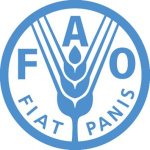- Industry: Agriculture
- Number of terms: 87409
- Number of blossaries: 0
- Company Profile:
Established in October 1945 with the objective of eliminating hunger and improving nutrition and standards of living by increasing agricultural productivity, FAO coordinates the efforts of governments and technical agencies in programs for developing agriculture, forestry, fisheries, and land and ...
A metabolite produced by a pathogen which has a host specificity equivalent to that of the pathogen. Such toxins are utilized for <i>in</i> <i>vitro</i> selection experiments to screen for tolerance or resistance to the pathogen.
Industry:Biotechnology
A method by which cells that carry a DNA insert integrated at a specific chromosomal location are selected.
Industry:Biotechnology
A method for cloning large regions of a chromosome. Starting from a known site, a gene library is screened for clones that hybridize to DNA probes taken from the ends of the first clone. These clones are then isolated, and their ends used to screen the library again. These clones are then isolated and their ends used, and so on.
Industry:Biotechnology
A method for separating molecules by exploiting their ability to bind specifically to other molecules. There are several types of biological affinity chromatography. A biological molecule can be immobilized and a smaller molecule (ligand, q.v.,) to which it is to bind can be stuck to it, or the smaller ligand can be immobilized and the macromolecule stuck to it. A variant is to use an antibody as the immobilized molecule and use it to "capture" its antigen: this is often called immuno-affinity chromatography. A variation is pseudo-affinity chromatography, in which a compound which is like a biological ligand is immobilized on a solid material, and enzymes or other proteins are bound to it. Other techniques include metal affinity chromatography, where a metal ion is immobilized on a solid support: metal ions bind tightly and specifically to many biomolecules. The metal ion is bound to a chelator or chelating group, a chemical group that binds specifically and extremely tightly to that metal.
Industry:Biotechnology
A method for separating nucleic acid or protein molecules according to their molecular size. The molecules migrate through the inert gel matrix under the influence of an electric field. In the case of protein PAGE, detergents such as sodium dodecyl sulphate (SDS) are often added to ensure that all molecules have a uniform charge. Secondary structure can often lead to the anomalous migration of molecules. Therefore it is common to denature protein samples by boiling them prior to PAGE. In the case of nucleic acids, denaturing agents such as formamide, urea or methyl mercuric hydroxide are often incorporated into the gel itself, which may also be run at high temperature. PAGE is used to separate the products of DNA-sequencing reactions and the gels employed are highly denaturing, since molecules differing in size by a single nucleotide must be resolved.
Industry:Biotechnology
A method for sequencing long (>1 kb) cloned pieces of DNA. The initial sequencing reaction reveals the sequence of the first few hundred nucleotides of the cloned DNA. On the basis of these data, a primer containing about 20 nucleotides and complementary to a sequence near the end of sequenced DNA is synthesized, and is then used for sequencing the next few hundred nucleotides of the cloned DNA. This procedure is repeated until the complete nucleotide sequence of the cloned DNA is determined.
Industry:Biotechnology
A method in which smaller DNA fragments are cloned from a large insert which has already been cloned in a vector.
Industry:Biotechnology
A method of cloning the coding sequence of a gene, starting with its mRNA transcript. It is normally used to clone a DNA copy of a eukaryotic mRNA. The cDNA copy, being a copy of a mature messenger molecule, will not contain any intron sequences and may be readily expressed in any host organism if attached to a suitable promoter sequence within the cloning vector.
Industry:Biotechnology
A method of delivering a drug to the site in the body where it is needed, rather than allowing it to diffuse into many sites.
Industry:Biotechnology
A method of separating sub-cellular particles according to their sedimentation coefficients, which are roughly proportional to their size. Cell extracts are subjected to a succession of centrifuge runs at progressively faster rotation speeds. Large particles, such as nuclei or mitochondria, will be precipitated at relatively slow speeds; higher G forces will be required to sediment small particles, such as ribosomes.
Industry:Biotechnology
